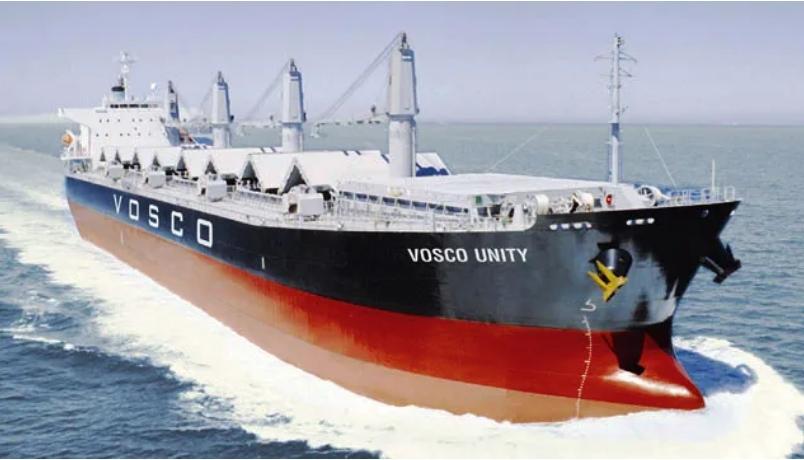《装卸时间与滞期费》第6版
CHAPTER 3 第3章
Commencement of laytime 装卸时间的起算
3.32 Berth charters are probably the oldest form of charter, arrival in berth being the natural completion point of the voyage. The Voylayrules 1993 define berth in the following terms:
‘‘ BERTH’’ shall mean the specific place within a port where the vessel is to load or discharge. If the word ‘‘ BERTH’’ is not used, but the specific place is (or is to be) identified by its name, this definition shall still apply.
3.32 泊位租船合同可能是最古老的租船合同形式,抵达泊位则是航程的自然结束点。《1993年航次租船合同装卸时间解释规则》中是这样定义泊位一词的:
‘泊位’是指船舶在港口内进行装货或卸货的具体地点。凡未使用‘泊位’一词的具体地点但其名称足以识别或应该识别为泊位的,也适用本定义。
3.33 The principal change from the Charterparty Laytime Definitions 1980 is the addition of the words ‘‘within a port’’ in the first line.
3.33它同《1980年租船合同装卸时间定义》的主要变化是,在第一行加进了‘在港口内’一词。
3.34 A berth is an individual loading point on a jetty, wharf or in a dock system. Individual berths are not usually given names but numbers, being referred to as No 1 berth, No 2 berth, etc. In most berth charters, the designation is ‘‘one safe berth X port’’ leaving the charterer free to nominate any berth in that port or more commonly to inform the shipowner which berth he has been allocated by the port authority. Occasionally, however, a charter specifies a particular wharf or jetty, which may have, say, two or three berths on it, but such a charter is usually held to be of the same character as a berth charter.
3.34泊位就是在突堤、码头或船闸内的一个单独的装货地点。通常情况下,单独的泊位不给予命名,而按编号来区分,比如1号泊位、2号泊位等等。大多泊位租船合同都是这样规定的‘某某港的一个安全泊位’,由承租人自由指定港内的泊位或者在更多情况下是通知船东由港口当局分配其停靠的泊位。尽管如此,偶尔也有些合同只规定某个码头或突堤,或许再加上其中的一个、两个或三个泊位,通常这类合同也被判定为同泊位租船合同的性质一样,视为泊位租船合同。
3.35 The original concept of a berth charter was one in which a particular berth was named in the charter but, as has already been discussed, this has been extended to include situations where the vessel is to proceed to a berth at the charterer’s express (as opposed to implied) option within the port. An illustration of a slightly unusual provision is provided by London Arbitration 14/07, where the charter in question had a “Loading Port” provision which provided for the vessel to load at “1SB OR ANCHORAGE... ALONGSIDE IMPORTER VESSEL . . . OR BARGES . . . OR ALONGSIDE WHARF”. In that case, the tribunal held that it was plainly anticipated that the ship would load alongside something, most likely the vessel named in the “Loading Port” provision; and also there or alongside barges, she would probably be at an anchorage. Such a place would, in the context, be a berth for notice purposes, although perhaps not in the usual sense of the word.
3.35泊位租船合同最初概念是在合同中订明一个具体的泊位,但是,如同前文已经讨论过一样,这个概念已经扩展包括船舶将驶往承租人有明示(而非默示)选择权指定的港口内某一个泊位的情形。在报道的伦敦仲裁2007年第14号案中展示了对一条稍微不寻常的条文的解释,该租船合同内一条‘装货港’条文规定:船舶在在‘一个安全泊位或锚地装货……靠泊在进口商的船旁边……或驳船旁……或码头旁’。在该案,仲裁庭裁定:这明显预料到船舶要靠泊某处进行装货,很可能是‘装货港’条文中指定的船舶;也可能是在某处或者可能在锚地靠在驳船旁。根据上下文观察,这一地方是一个泊位,尽管也许是没有使用通常意义上的词语。
3.36 In a berth charter, the specified destination is reached when the vessel is in that berth and does not need to move further to load or discharge. In E L Oldendorff & Co GmbH v. Tradax Export SA, Lord Diplock said:
Where a single berth was specified in the charterparty as being the place of loading or of discharge, the loading voyage or the carrying voyage did not end until the vessel was at that very berth. Until then no obligation could lie upon the charterer to load the cargo, or to receive it, as the case might be. If the specified berth were occupied by other shipping, the vessel was still at the voyage stage while waiting in the vicinity of the berth until it became available, and time so spent was at the shipowner’s expense.
3.36根据泊位租船合同,船舶只要抵达该泊位就算抵达了规定的目的地,而不需要进一步移动去装货或卸货。在E L Oldendorff & Co GmbH v. Tradax Export S A—案中,Diplock 勋爵说:
如果租船合同中订明了一个单独的泊位作为装货或者卸货地点,那么在船舶尚未靠妥那个泊位之前该轮的装货航程或载货航程就没有结束。在该轮已停泊于该泊位之前,承租人并不承担装货或者(视情况而定)接收货物的责任。如果所指定的泊位被其他船占用,那么,该轮在其附近等泊直到泊位空闲可利用的这段时间仍算作航程阶段,在这期间的时间损失由船东承担。

《装卸时间与滞期费》购买链接(点击可购买)
海运圈聚焦专栏作者 魏长庚船长(微信号CaptWei)

 2018-12-04
2018-12-04 1056
1056 












